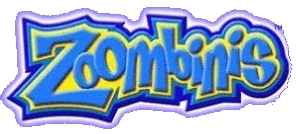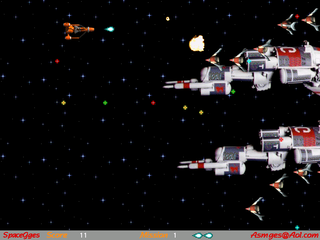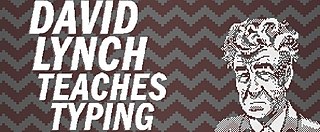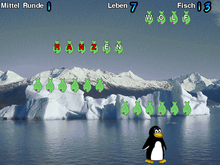
A video game or computer game is an electronic game that involves interaction with a user interface or input device to generate visual feedback from a display device, most commonly shown in a video format on a television set, computer monitor, flat-panel display or touchscreen on handheld devices, or a virtual reality headset. Most modern video games are audiovisual, with audio complement delivered through speakers or headphones, and sometimes also with other types of sensory feedback. Some video games also allow microphone and webcam inputs for in-game chatting and livestreaming.

Mavis Beacon is a fictional character created for the Mavis Beacon Teaches Typing line of computer software.

Broderbund Software, Inc. was an American maker of video games, educational software, and productivity tools. Broderbund is best known for the 8-bit video game hits Choplifter, Lode Runner, Karateka, and Prince of Persia, as well as The Print Shop—originally for printing signs and banners on dot matrix printers—and the Myst and Carmen Sandiego games. The company was founded in Eugene, Oregon, and moved to San Rafael, California, then later to Novato, California. Broderbund was purchased by SoftKey in 1998.

The Oregon Trail is a text-based strategy video game developed by Don Rawitsch, Bill Heinemann, and Paul Dillenberger in 1971 and produced by the Minnesota Educational Computing Consortium (MECC) beginning in 1975. It was developed as a computer game to teach school children about the realities of 19th-century pioneer life on the Oregon Trail. In the game, the player assumes the role of a wagon leader guiding a party of settlers from Independence, Missouri, to Oregon City, Oregon via a covered wagon in 1847. Along the way the player must purchase supplies, hunt for food, and make choices on how to proceed along the trail while encountering random events such as storms and wagon breakdowns. The original versions of the game contain no graphics, as they were developed for computers that used teleprinters instead of computer monitors. A later Apple II port added a graphical shooting minigame.

Zoombinis was a series of educational puzzle computer games that were originally developed by TERC and published by Broderbund. In 1998, Broderbund was purchased by The Learning Company, who took responsibility for developing and publishing the series in 2001. The series consists of three games: Logical Journey of the Zoombinis (1996), Zoombinis: Mountain Rescue (2001), and Zoombinis: Island Odyssey (2002). Logical Journey was remade as Zoombinis for modern operating systems in 2015. The series focuses on the Zoombinis, small blue creatures each with different appearances and personalities, which the player must guide through strange puzzle-filled lands.

Mario Teaches Typing is an educational video game developed and published by Interplay Productions for MS-DOS compatible operating systems, Microsoft Windows, and Macintosh. The game uses the Mario character, licensed from Nintendo, to teach keyboard skills. A sequel to the game, Mario Teaches Typing 2, was developed by Brainstorm and published by Interplay in 1997.

A video game genre is an informal classification of a video game based on how it is played rather than visual or narrative elements. This is independent of setting, unlike works of fiction that are expressed through other media, such as films or books. For example, a shooter game is still a shooter game, regardless of where or when it takes place. A specific game's genre is open to subjective interpretation. An individual game may belong to several genres at once.

Lode Runner is a 2D puzzle-platform game, developed by Doug Smith and published by Broderbund in 1983. Its gameplay mechanics are similar to Space Panic from 1980. The player controls a character who must collect all the gold pieces in a level and get to the end while being chased by a number of enemies. It is one of the first games to include a level editor.

Star Wars is a first-person rail shooter designed by Mike Hally and released as an arcade video game in 1983 by Atari, Inc. It uses 3D color vector graphics to simulate the assault on the Death Star from the 1977 film Star Wars. There are three connected gameplay sequences: combat against TIE fighters in space, flying across the surface of the Death Star, and the final trench run. The sequence repeats with added complications and the Death Star regenerating for each. The player's X-Wing fighter has a shield which only protects against damage a certain number of times, then the next hit ends the game. Speech synthesis emulates actors from the film.
The following outline is provided as an overview of and topical guide to video games:

Mavis Beacon Teaches Typing is an application software program designed to teach touch typing. Released in late 1987 by The Software Toolworks, the program aimed to enhance users' typing skills through a series of interactive lessons and games.

Spelunker is a 1983 platform video game developed by Timothy G. Martin of MicroGraphic Image. It is set in a cave, with the player starting at the cave's entrance at the top, and the objective is to get to the treasure at the bottom.

The Software Toolworks, Inc., was an American software and video game developer based in Novato, California. The company was founded by Walt Bilofsky in 1980 out of his Sherman Oaks garage, which he converted into an office, to develop software for the Heathkit H89 microcomputer. It quickly expanded into video games, releasing Airport and MyChess in 1980; other notable games include Chessmaster 2000, Mavis Beacon Teaches Typing, and Mario Is Missing!. Toolworks merged with its distributor, Software Country, in 1986 and, after going public in 1988, acquired IntelliCreations, DS Technologies, and Mindscape. By 1994, Toolworks employed 600 people and had a revenue of US$150 million. In May that year, it was acquired by Pearson plc for $462 million, which converted it to bear the Mindscape identity by November.
Sirius Software was a California-based publisher of video games for the Apple II, Atari 8-bit computers, Commodore 64, and VIC-20. Most games were written for the Apple II, then ported to other systems. The company was founded in 1980 by Jerry Jewell and Terry Bradley and released over 160 games before folding in 1984. Sirius also developed games for the Atari 2600 which were published in 1982 and 1983 by 20th Century Fox Video Games. Fox's failure to pay Sirius resulted in company's downfall. Nasir Gebelli wrote some of the early hits from Sirius, establishing his reputation as an Apple II game programmer.
Synapse Software Corporation was an American software developer and publisher founded in 1981 by Ihor Wolosenko and Ken Grant. Synapse published application software and developer tools and was primarily known for video games. It initially focused on the Atari 8-bit computers, then later developed for the Commodore 64 and other systems. Synapse was purchased by Broderbund in late 1984 and the Synapse label retired in 1985.
Tower defense (TD) is a subgenre of strategy games where the goal is to defend a player's territories or possessions by obstructing the enemy attackers or by stopping enemies from reaching the exits, usually achieved by placing defensive structures on or along their path of attack. This typically means building a variety of different structures that serve to automatically block, impede, attack or destroy enemies. Tower defense is seen as a subgenre of real-time strategy video games, due to its real-time origins, even though many modern tower defense games include aspects of turn-based strategy. Strategic choice and positioning of defensive elements is an essential strategy of the genre.

In video games, first-person is any graphical perspective rendered from the viewpoint of the player character, or from the inside of a device or vehicle controlled by the player character. It is one of two perspectives used in the vast majority of video games, with the other being third-person, the graphical perspective from outside of any character ; some games such as interactive fiction do not belong to either format.

Kids on Keys is a 1983 educational video game from Spinnaker Software designed by Freeda Lekkerkerker.

A.E. is a fixed shooter written by Jun Wada and Makoto Horai for the Apple II and Atari 8-bit computers and published by Broderbund in 1982. Versions followed for the VIC-20 (1983) and MSX (1984). Unlike most earlier shooters which have a solid color or starfield as a background, the action in A.E. takes place in front of science fiction scenes. Attacking creatures emerge from points in the image, often appearing to come from behind objects. Combined with a slight scaling as they advance, there is the impression of depth.

David Lynch Teaches Typing is a 2018 game by independent developer Rhino Stew Productions. Described as a "short playable interactive comedy game" and an "interactive experience", David Lynch Teaches Typing is a satire of touch typing educational software titles such as Mavis Beacon Teaches Typing. A likeness of David Lynch assists the player in completing a series of increasingly bizarre and unsettling typing tasks.















